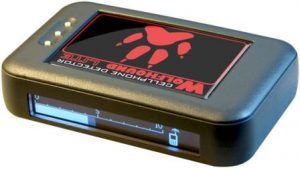8 Amazing Technological Advancements in Today’s Prisons
Technological innovations can spur the growth of businesses and increase quality of life. But what about in places where we never go? Even in prisons, where inmates stay in small cells and wear orange jumpsuits, technology is changing the way that business works. Corrections facilities are their own micro-economy, and technological advancements and new methods are shaping the way that 21st century prisons will look and function. Whether on the warden’s side or the criminal’s, take a look at these eight amazing technological advancements that are changing today’s prisons.
-
WANDD
With just a few clicks and swipes, the days of worrying about a hidden shiv are over. The Weapons and Non-Permitted Devices Detector, also called the WANDD, is a handheld and operated scanner that makes it easier to detect hidden makeshift weapons that violent inmates often fashion. The product, created by Luna Innovations, Inc., identifies homespun weaponry, regardless of material (metal and non-metal weapons can be spotted with WANDD). The product was tested with success at the Virginia Peninsula Regional Jail in Williamsburg, Va.
-
PharmaJet
Recently approved by the FDA, PharmaJet is a needle-free injection system, and works well for medicating and immunizing sick inmates. This addition to the prison medical system makes the entire healthcare process safer, for doctors, patients, and those that fear the needle (or what a crazy criminal might do with it).
-
Cell Phones
Even the inmates can benefit from technology, but they still have to find a way to get it. For inmates, cell phones (which are contraband in most cases) are great tools for organizing and even protesting. In December of 2010, several Georgia state prisons were locked down for more than a few days when inmates used the machines to organize a work-stopping protest against inhumane prison conditions.
-
Biometrics
Biometrics puts a more intimate spin on the concept of an ID badge. The Corrections Biometric Management System, or CBMS, features technology that detects a person by their retinas, fingerprints, and more. Unlocking cells, cabinets, and storage units, with this leap forward, prison officials will be able to tell exactly who and where their inmates and employees are at all times — and what they’re biologically permitted to access.
-
RFID Tracking
Radio frequency identification tracking is a great way to keep track of an inmate’s or cell block’s whereabouts. TSI Prism from Black Creek Integrated Systems is a real-time location and tracking tech that was specifically designed for the corrections industry. Saving guards time and energy, RFID tracking will surely change the way that prisons are run and prisoners are tracked.
-
The Wolfhound
 Not so fast, crims. Those cell phones you just used to protest are illegal in prisons, and someone’s going to find and confiscate that contraband. Enter: The Wolfhound. In October 2009, the Berkeley Varitronics Wolfhound detected cell phones (via detecting their calls and text messages) hidden beneath floors and inside walls. The California prison system confiscated more than 4,000 cell phones, and the Wolfhound made prison tech history.
Not so fast, crims. Those cell phones you just used to protest are illegal in prisons, and someone’s going to find and confiscate that contraband. Enter: The Wolfhound. In October 2009, the Berkeley Varitronics Wolfhound detected cell phones (via detecting their calls and text messages) hidden beneath floors and inside walls. The California prison system confiscated more than 4,000 cell phones, and the Wolfhound made prison tech history. -
TASER X12 Less Lethal Shotgun
This is the ultimate gun for a prison riot. It’s colored yellow, to indicate that it’s a “less lethal” weapon, and is optimized for use up to 100 feet. After engaging with a target, the gun fires off a painful, 20-second pulse. Bad enough to stun and stop, but usually not enough to kill, the TASER X12 is a seemingly more humane way to play cops and robbers.
-
Telehealth
Telehealth systems are found in all Texas prisons (of which there are quite a few). This camera-based system, developed to diagnose and deliver health services using telecommunications technology has saved lives and a considerable amount of money for Texas inmates and prisons.
*Today’s article brought to you by www.criminaljusticedegreesguide.com





Now to see which states come up with the necessary funding to buy/implement these systems and train personnel to use them.